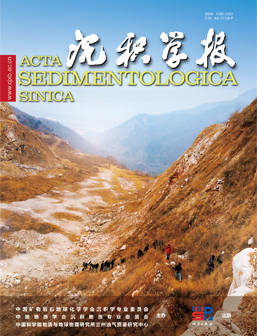Non-Latitudinal Zonal Characteristics and Origin of Chemical Weathering of Aggradational Red Earth in Southern China
doi: 10.14027/j.issn.1000-0550.2024.097
- Received Date: 2024-05-27
- Available Online: 2024-09-26
-
Key words:
- Key words:aggradational red earth /
- chemical weathering /
- weathering zonality /
- regional factors
Abstract: Abstract: [Objective] Research on the weathering process of the aggradation red earth in subtropical China has long been crucial for understanding the evolution of the Quaternary environment. However, a comprehensive knowledge of the weathering environment of the aggradation red earth is hampered by the infrequent reporting of research on the weathering characteristics of the aggradation red earth at the spatial scale. [Methods] Based on a systematic analysis of the weathering characteristics of the aggradational red earth sections in southern China, this study focused on the Jinqu Basin, where non-zonal factors have a significant impact. The research primarily explored the chemical weathering characteristics and formation mechanisms of red earth within the basin, to deepen our understanding of the weathering features of aggradational red earth. [Results] The study shows that: 1) On a large scale, the weathering intensity of aggradational red earth in southern China is strongly correlated with hydrothermal conditions, with weathering intensifying as latitude decreases. However, the chemical weathering of red earth in certain locations or specific sections does not entirely conform to the latitudinal zonality in the mid-subtropical region between 25?N and 31?N, where aggradational red earth is widely spread. 2) The geochemical composition of aggradational red earth in the Jinqu Basin exhibits good consistency, with minimal differences in element enrichment or depletion among samples. However, there is regional variability in the degree of chemical weathering in the developmental stages of vermicular and typical red clays following the stagnation of vermicularization in the Jinqu Basin, compared with the chemical weathering characteristics of other aggradational red earth sections at the same latitude. 3) Influenced by a combination of factors such as provenance, topography, and local climate, the weathering characteristics of the aggradational red earth in the Jinqu Basin exhibit certain non-latitudinal zonal features. [Conclusion] The weathering characteristics of the aggradational red earth in southern China primarily follow a latitudinal zonal pattern under the large-scale monsoon evolution pattern. However, owing to the influence of non-zonal factors including topography, water, and differences in the geographic features of potential provenance, the chemical weathering of aggradational red earth also exhibits certain non-zonal characteristics within the mid-subtropical region between 25?N and 31?N. The relatively small and enclosed basin terrain of the Jinqu Basin, along with local microclimate conditions and contribution of bedrock weathering products to the red earth provenance, plays a significant role in interpreting the chemical weathering information of the red earth. Therefore, it is crucial to consider regional impacts while discussing the chemical weathering characteristics in different areas.
| Citation: | Non-Latitudinal Zonal Characteristics and Origin of Chemical Weathering of Aggradational Red Earth in Southern China[J]. Acta Sedimentologica Sinica. doi: 10.14027/j.issn.1000-0550.2024.097 |






 DownLoad:
DownLoad: